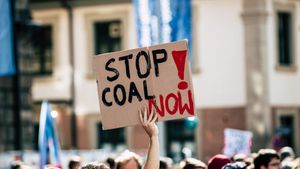The Biden administration is revving up efforts for a new student loan forgiveness program, set to roll out this October. With expectations to assist at least 25 million borrowers, this initiative is aimed at providing much-needed relief amid rising concerns about student debt.
Following the Supreme Court's rejection of Biden's initial loan cancellation strategy, the education department has plans for a broader debt relief proposal. This revamped plan is anticipated to finalize soon, aligning with the department’s timeline shared earlier this year.
Notably, the plan doesn't stop at previous initiatives. The Education Department has promised additional relief for financially struggling borrowers with unique circumstances, such as those facing unexpected medical bills.
Under this new framework, advocates are urging the department to widen eligibility to cater to more individuals. This includes recent graduates and low-income households who have been unable to repay their loans due to financial hardship.
Eligibility for this new wave of forgiveness could extend up to $20,000 for specific applicants. Those who meet certain income thresholds, including individuals earning less than $120,000 and couples below $240,000, may qualify.
Not every borrower will reap the benefits, though. Some who have prior recovery plans, like income-driven repayment options, might not be able to access this new relief measure.
A significant point of discussion is the potential court responses to these upcoming proposals. Many worry the courts could intervene, which would limit access to the forgiveness options being set forth.
Meanwhile, speculation runs high with midterms approaching, as the timing of these announcements plays right before the elections. Political experts note this may be purely strategic, aiming to rally support from young voters heavily burdened by student loans.
Essentially, the administration is laying groundwork to stimulate economic growth by easing the college debt burden. Advocates argue this may allow newly-released funds to circulate back within the economy.
Affording students the chance to eliminate crippling debt could have ripple effects. Experts predict this would not only improve individual financial standings but also invigorate local and state economies.
Thus far, Biden's promise of loan forgiveness has remained one of his administration's biggest draws. The continual evolution of this initiative reflects both the demands and complicacies involved with alleviating student debt.
Time will tell how this latest plan affects borrowers, especially those grappling with severe financial challenges. While anticipation builds, one thing is clear: borrowers are eager for clarity and support as they navigate their paths forward.
Borrowers are encouraged to stay aware of updates on eligibility and application processes as these developments come to light. The effort surrounding student loan forgiveness is not just about relieving debt but also building pathways for future growth and opportunity.
So here’s hoping this time might truly lead to substantive change and not just promises. Stay tuned, as the administration gears up for what it hopes will be a transformative moment for millions affected by crippling student loans.



